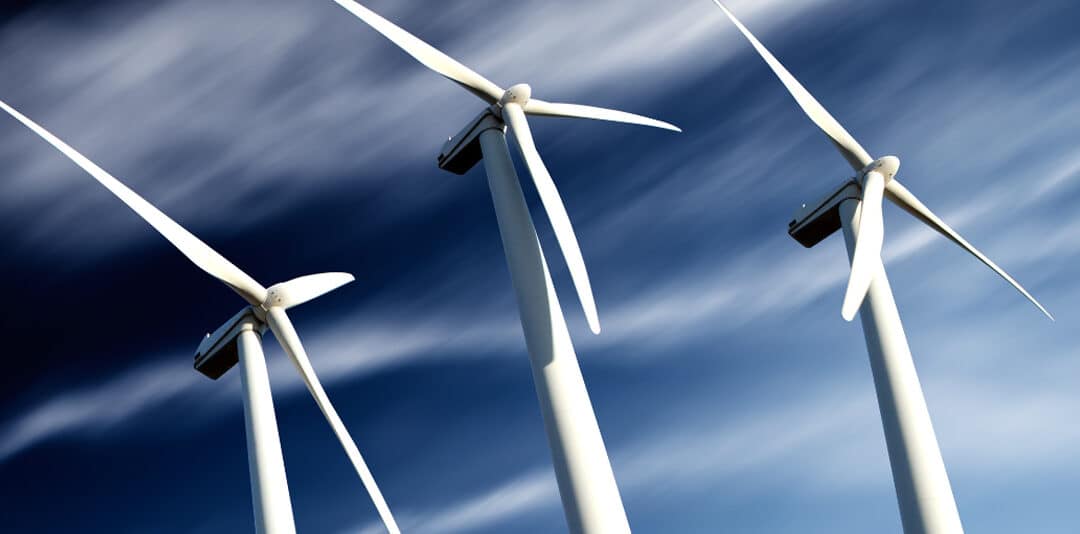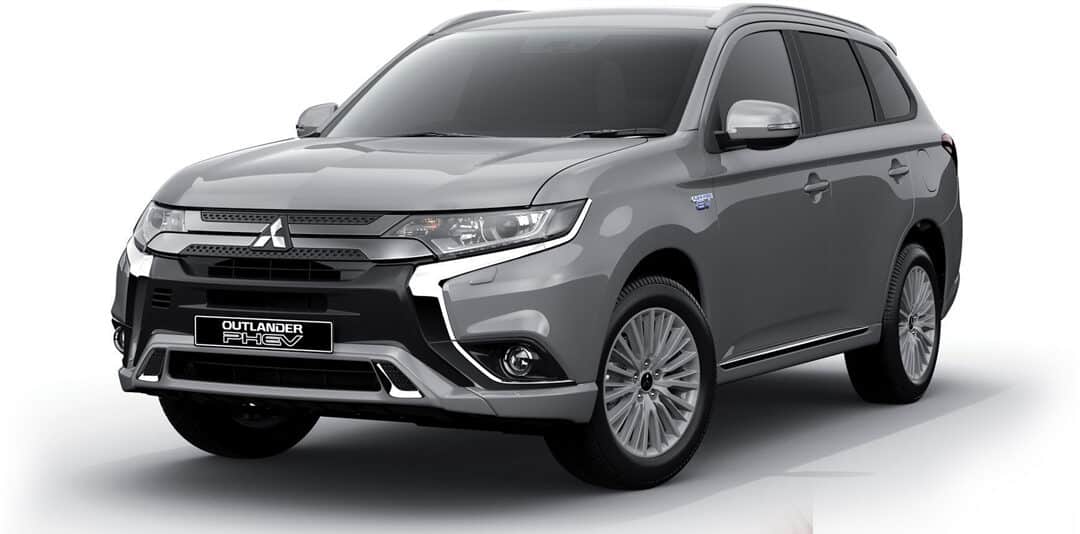by DavidSpratt | May 9, 2019 | Energy
When we look at New Zealand electricity prices, it is important to consider lines companies in the equation.
The lines company or electricity distribution business (EDB) operates and maintains the transformers, power poles and copper wires that keep our local electricity networks running and delivering reliable electricity to the door. Examples in the EMA membership region are Northpower, Vector, Counties Power, WEL Networks and Powerco.
Lines companies in your power bill
Take my last home bill. The energy component, which is the part provided by my retailer, was $184.76. This part is subject to market competition and as a privileged, old white guy with a good credit history I can move freely between retailers chasing the best price. I can also take advantage of a prompt payment discount of $56.65 – nearly 30 per cent of the entire cost of the energy I purchased that month.
In the detail of my bill, however, is another bit called the “Daily Line Charge” of $52.85, being 33 days at $1.60 per day charged by my local lines company.
Electricity Monopolies and Regulations
Unlike retailers, lines companies are monopolies, not subject to competition and they supply an essential service. As a result, they are highly regulated by the Electricity Authority and the Commerce Commission.
This regulation occurs in three ways:
• Limits to the percentage return on the assets deployed,
• Legal requirements for the quality and price of service, and Company ownership structures.
There are 27 electricity distribution businesses in New Zealand. Some are privately owned such as the North Island giant, Powerco, which is owned by overseas investors and supplying electricity and gas to about 440,000 homes in the North Island.
There are public/private ownership companies such as Auckland’s Vector (supplying 331,000 households) which is 70 per cent owned by a consumer-owned trust and 30 per cent by shareholders on the stock exchange.
There are also 100 per cent consumer-owned trusts such as Counties Power and there are companies owned wholly or in part by local Councils, eg, Aurora, which is owned by Dunedin City Council.
Owners and investments
Ownership is critical when we look at pricing and quality of service and the impact of rules, regulations and the inconsistent behaviour of the regulators.
Privately-owned Powerco, for example, after years of underinvestment in lines infrastructure, last year went to the regulator asking for dispensation to increase its charges to consumers so it could remediate its increasingly dilapidated and unreliable infrastructure. Incredibly, the regulator agreed to this request without a whimper!
Meanwhile, further south, the Commerce Commission is indicating it will levy fines on council-owned Aurora for quality failures on its network. These failures have been attributed to Dunedin City Council’s active decision to use Aurora’s profits to help fund a new sports stadium and other civic works, while neglecting maintenance and renewal of its electricity infrastructure.
Back up north, after a one-in-100-year storm blew out the lights in Auckland last year, Vector was fined nearly $3.6 million by the Commerce Commission for failure to meet its reliability targets for the second year in a row. This, despite massive investment on Vector’s part in technology and improved services aimed specifically at improving quality.
Areas of economic growth such as Auckland, the Bay of Plenty and Franklin are faced with big increases in investment to meet demand, while many EDBs in the regions face regulatory demands for increased investment in infrastructure despite their consumer bases shrinking.
Ownership has a direct relationship to New Zealand’s electricity prices. Whether growing or shrinking, the reality is that EDBs are in a bind, because investment in maintaining and growing reliable infrastructure means price increases are a fact of life for the consumer.
In the meantime, the Electricity Authority’s price review seems to be wilfully ignoring the market-distorting behaviours being exhibited by the elephants in the room: the government-controlled generators/retailers (gentailers). We’ll take a look at them in an upcoming article…

by DavidSpratt | May 1, 2019 | Energy
In 2009 a visiting expert on commodity studies from Stanford University, Professor Frank A Wolak, opined that each year New Zealand’s electricity consumers were paying around $700 per household more than they should.
This figure also applied to the tens of thousands of small businesses using small amounts of electricity. What followed was a studied silence from the industry.
Government’s Energy Price Review
In April 2018 after years of consumer electricity prices continuing to rise at a rate far exceeding inflation, the Minister of Energy and Resources appointed Miriam R Dean QC to, among other things, conduct an energy price review. The aims included investigating whether the electricity market, as it exists at present, is delivering fair and equitable electricity pricing.
There has subsequently been a great deal of debate and finger-pointing as to just who is responsible for an electricity market that delivers average monthly bills of around $300 to Kiwi households, while our Melbourne, Australia, cousins are charged roughly the same price per quarter!
All this while Aussie generators are burning expensive and polluting coal, gas and oil to meet demand, and we mainly use sustainable hydro generation that has paid for itself many times over.
Business Impacts
As business people, we are not immune from this unresponsive market. Our staff are consumers too and their budget pressures impact wage demands. We are also just the last cab off the rank when it comes to increased electricity price charges.
If you signed a new, fixed price, 24-month electricity contract last September you will now be paying around 20 per cent less for electricity than if you signed a similar contract today. Everything indicates that this trend in the commercial market will continue as the industry continues to “adjust” prices skywards.
The Power Players
There are several players that influence our electricity market. Let’s start with the retailers. Most of us are aware of so-called “prompt payment discounts” that offer between 10 and 20 per cent lower pricing if we pay on time. For individuals or businesses under financial pressure these discounts can often be unattainable as the need to pay staff, taxes or put food on the table trumps their ability to pay by a given date.
What many of us don’t realise is that these discounts are often not discounts at all. The retailer has just loaded the “discount” onto their usual rate, leaving the late payer under even more cost pressure.
To their credit Meridian announced an end to this practice last September. The price review panel chimed in last month and called for an end to this practice altogether.
To Switch or Not to Switch?
There are also the much advertised switching campaigns that try to persuade consumers and small businesses to switch suppliers in the hope of getting a better deal. This is a complete fallacy for small businesses and households under financial pressure. While retailers are only too happy to accept businesses or individuals with good credit records, they simply decline switch applications from distressed payers.
It could be said that’s the outcome of paying bills late but in many cases credit checks will, at a time when they need to watch every dollar, exclude people or businesses from beneficial pricing.
Many retailers have also, until recently, offered significant incentives to stop customers from switching. Fair enough, you might think, except that businesses that pay their bills on time and loyally stick with their preferred supplier are not offered these incentives, and so end up paying more despite being great customers.
This, along with many other structural impediments, is exactly why Ms Dean QC and her team are finally taking a long, hard look at how our electricity market functions. This year’s energy price review should prove interesting!

by RichardGardiner | Mar 21, 2019 | Company News, News
Like the one third of a million Kiwis who were born in the UK, our family was drawn here in the first place by the beauty of New Zealand, its down to earth friendly culture and reputation for freedom and tolerance for all.
26 years later we all feel the same way! Our business has staff born in New Zealand, Brazil and the UK. We are all united by being Kiwis!
The barbaric mass murder of innocent Muslims in Christchurch last Friday does not define us. It is the exception to the rule not the rule itself. This atrocity was committed by a pathetic misfit who has no place in our society.
There are 4.8 million of us and we all need to stand together to protect all that is good in our country and way of life.
Differences of religion, ethnicity and political views are neither here nor there in the wider scheme of things. We all need to continue to focus on what values unite us rather than our superficial differences. We all want the best for our families and for the country as a whole.
Live and let live for all.
The following was sent to me on Monday from David Goadby, also from the UK. I felt compelled to share this with our wider community as it echos the comments I have made above. In no way is this an advertisement for energyclubnz.
The tragic events of last Friday have shocked not only the country but also the world. In such a small country like New Zealand it is likely that a lot of our members will have been impacted in some way, even if it is questioning whether the country we call home is actually as safe as we once considered.
The energyclubnz team is based in communities across New Zealand including Christchurch. We pride ourselves on the fact that our small, passionate team are a diverse bunch from many backgrounds, religions and nationalities. Most importantly we all consider New Zealand to be our home.
Our thoughts and prayers are with the families who have been directly impacted.
As a business whose core values include ‘doing the right thing’, myself and the team don’t feel it is right to make a profit from such a dark day in New Zealand’s history. Because of this, we will be donating all of our club fees from last Friday directly to Christchurch St John’s Ambulance who have given immense support during this tragedy.
The energyclubnz team is doing this because we care about our community and the country we all live in.
If you would like to donate to St John’s Ambulance to support their First Response Units click here.
My thoughts are with all of New Zealand and I hope that we can pull together to treasure the diversity of our beautiful country – more than we’ve ever done before.
Yours sincerely,
David Goadby – Founder, energyclubnz

by DavidSpratt | Mar 4, 2019 | Energy
[Electricity] Demand has, year on year, been steadily rising. This trend is likely to continue, so don’t look for much relief from higher electricity prices in the near term.
I recently talked to a businessperson who had signed up to an electricity contract that had his company effectively speculating on the spot market.
What the company didn’t realise (and wasn’t told) was that playing the electricity spot market was fraught with upside cost risk. In their case they are now paying more than three times the standard retail electricity rate for business, and facing significant fees if they attempt to get out of the contract.
What disappointed me in this case was that the consultant they paid for advice also took a trailing commission from the electricity service provider. In other words, no-one was representing the client’s best interests in a transaction that was fraught with risk.
Let’s talk about the situation our businessman faces and how it came about that the company is locked into a contract that will potentially cost it tens of thousands of dollars more than a simple retail contract offered.
It comes down to supply, demand and price uncertainty.
How the electricity spot market works
 Most of our electricity is provided via South Island lakes. Lake water has remained at average levels for the time of year right through the summer period thus far. What has driven the price escalations is thermal outages. A large chunk of North Island thermal generation plant has been unavailable due to maintenance.
Most of our electricity is provided via South Island lakes. Lake water has remained at average levels for the time of year right through the summer period thus far. What has driven the price escalations is thermal outages. A large chunk of North Island thermal generation plant has been unavailable due to maintenance.
What was scheduled as a short-term outage has turned into longer ones as issues have been found that are taking time to remediate.
Even when it is running at full capacity, thermal generation is more expensive than hydro. The wholesale price of gas is escalating, and the price of coal has effectively doubled since 2016. The impact of this means that generators are less likely to offer thermal generation to the market if prices are low. Hydro has, therefore, been used through the year, reducing the ability for hydro generators to conserve water when the pressure went on summer lake levels.
National demand has also increased significantly. This summer so far, demand is the highest it has been in the past four years. Demand has, year on year, been steadily rising. This trend is likely to continue, so don’t look for much relief from higher electricity prices in the near term.
It’s not entirely bad news though. Even in a time of escalation, fixed prices have remained below where we were at this time in 2012. There was a significant market correction towards the end of that year and businesses have benefitted from attractive electricity pricing since.
Should we enter the spot market?
What does this mean for those businesses whose contracts have expired or will expire soon?
- Unless they have an energy expert on staff, they need to think very hard before entering contracts that lock them into variable pricing based on the electricity spot market.
- Negotiating an electricity contract can be complex. Good advice can save a business thousands, if not tens or even hundreds of thousands of dollars, depending on the size of the business and its energy use profile. Business should use a reputable advisor but be certain that he/she only represents the business’ interests.
- Right now, and for the rest of 2019 at least, I suggest a fixed term, fixed price contract wherever possible. Yes, business may pay a small premium in some cases but there are numerous, reputable electricity retail firms that offer good pricing and carry the upside risk for their clients.

by DavidSpratt | Feb 10, 2019 | Energy
Warning! Formidable Japanese electric vehicles (EVs) are coming to a dealer near you this year.
After reviewing European and American EVs last year, I was offered the Mitsubishi XLS SUV plug-in hybrid electric vehicle (PHEV) to test during my holiday break.
The XLS currently retails at $50,990 plus on-road costs (NZD). This puts it right in the sweet spot for businesses looking for a workhorse, four-wheel drive SUV.
Unlike two years ago when high prices and low residuals were a real turnoff for businesses, electric and hybrid SUVs are now in high demand on the second-hand market, and my industry contracts confirm premium trade in prices and strong lease residuals.
Lease companies’ reservations about financing EVs and PHEVs have largely evaporated.
The XLS combines a 2l petrol engine with twin electric motors, giving you a theoretical fuel efficiency of 1.7 litres of petrol per 100km travelled. In theory if you were running the electric motor only and never exceeded its specified range of 54km, then this incredible efficiency is quite possible.
However, in Auckland motorway traffic, I found a single tank of gas and a $1.50 overnight charge got me well over 700km or 6.43 litres of fuel for every 100km travelled: still an excellent range result by any measure.
Pragmatic manufacturing
When I drained the EV battery the XLS automatically switched to petrol power. It also offered the option of “charge” mode that used the petrol engine, engine braking and inertia, to recharge the electric motor. This proved more expensive in fuel usage but was convenient, simple and practical – Japanese manufacturing at its most pragmatic.
Charging has often been a bone of contention for users hooked on the convenience of petrol stations. This PHEV delivered a fast charge to 80 per cent in just 20 minutes. As fast chargers become more common the convenience gap should be a minor irritant for most users. We will have to alter our behaviours a little though.
Mitsubishi now offers a 160,000km, five-year warranty on the motor and an eight-year warranty on the battery. This largely matches the warranties offered for their petrol and diesel options.
So enough of the technicalities. What did I and the love of my life think of this Japanese invader? For me, words like practical, common sense, hardworking and efficient come to mind. My beloved liked the excellent visibility from both front and rear seats, the sensitive steering and braking and the fact that the vehicle looked stylish without losing its fundamental functionality.
We both loved the spacious leg room and fold-down seats for carrying luggage, samples and tools in the back.
We didn’t like the oddly small driver’s rear vision mirror. The acceleration and sustained performance that we have come to expect from electric vehicles wasn’t to the fore either. Not that the XLS was underpowered, it’s just that when you are used to the romance and zip of a pure electric motor the hybrid felt a bit like kissing your sibling: underwhelming.
Overall, I really liked this solid addition to the SUV fleet.
The years 2019 and 2020 will see big moves from Asian manufacturers into the EV market. Soon the combined price, residuals, fuel efficiency, reliability and convenient charging of hybrid and pure electric vehicle categories will make the business case very compelling for New Zealand enterprises looking to drive out costs, reduce capital deployed and contribute to a sustainable world for future generations.
Businesses will do well to keep a close eye on how they can reap the benefits.
I gave the Mitsubishi XLS PHEV a sturdy 7.5 out of 10.
See more electric car reviews, or New Zealand analysis of the electric car business case.

by DavidSpratt | Feb 8, 2019 | ICT
The below article was published recently in IT Brief New Zealand magazine.
The -aaS consumption model is nothing new when it comes down to brass tacks – it’s exactly how we’ve been consuming electricity ever since Edison and Tesla were squabbling.
Over the last 130 or so years, electricity consumption has risen and with it, the cost.
This is why Total Utilities stepped in to help businesses in New Zealand ensure that their power costs were being thoughtfully managed through analysis of quantitative and qualitative data.
Now, the team at Total Utilities have brought their years of experience and the array of tools at their disposal to help enterprises transition to the cloud in the most cost-effective and outcome-focused way possible.
Total Utilities strategy and transformation director David Spratt explained that as a company that specialises in the analysis of data, migration to the cloud is a no-brainer.
“The intellectual battle over the cloud is done,” Spratt says.
“if you haven’t heard about the multitude of advantages that public cloud can bring to any organisation, then you haven’t been listening. To be competitive from our corner of the world, you need to be using world-class technology and today, that means public cloud.”
Every day, more enterprises move onto the cloud. Every day, another startup is born there, ready to displace their predecessors. And every day, you have someone else tell you that if you don’t move now, you’re done for.
Total Utilities is not interested in this kind of manic hyperbole. In fact, the team’s knowledge and expertise in the cloud was inspired not just by their love of the tech, but more importantly by their passion for saving money for their clients.
“As a completely vendor-agnostic consultancy, we aren’t trying to convince anyone to spend more or upsell to products they don’t need,” Spratt explains.
“If your company has brand new servers that are fully functional and ticking along happily, you probably aren’t interested in migrating everything right now. We understand that and want to guide both IT specialists and C-level executives to make the right decisions about what should be moved, how it should be moved, and when to move it.”
Total Utilities helps organisations bridge the communication gap between IT and the C-suite, speaking both languages, and suggesting clear, evidence-based options that are all about making life easy for the techies, and making money for the execs.
This is not some upstart company aiming to build their experience – for the last five years, they have worked with New Zealand’s major kiwifruit exporter and agricultural giant Zespri, providing financial insights and ongoing evidence of the value that migrating to Azure has brought.
“We said to Zespri, ‘Are you really in the business of owning and operating IT?’ And of course they’re not,” Spratt elaborates.
“But certain key services they have to deliver. So how do you get out of the business of owning and operating tin boxes that go ping, and into the business of providing all the services that give a business strategic advantages?”
Total Utilities performed assessments in every area to see what the cloud could offer. They looked at the obvious benefits like the ability to copy/paste their systems for deployment in any country, simplified disaster recovery and backup, and the ability to scale up or down based on crop yield.
Scalability ended up being a key driver for Zespri as this transformation occurred at the same time as the much-publicised Psa disease that threatened to wipe out their gold kiwifruit stock.
Zespri wasn’t sure if it would end up with shipping numbers dropping from 80 million to 40 million, or if a new strain of fruit would take successfully and end up yielding 140 million. Total Utilities showed them how being in the cloud would mean they were ready for any eventuality.
But then they even dug deeper, looking at the cost per square metre of housing private servers, power costs, and the depreciation of hardware over time.
Today, Zespri still sits on Azure and continues to work with Total Utilities to ensure that it is always in the best position to achieve its goals as one of New Zealand’s biggest organisations.
Now, Total Utilities wants to help your organisation be as profitable and streamlined as it can possibly be – get in touch today to find out how.









 Most of our electricity is provided via South Island lakes. Lake water has remained at average levels for the time of year right through the summer period thus far. What has driven the price escalations is thermal outages. A large chunk of North Island thermal generation plant has been unavailable due to maintenance.
Most of our electricity is provided via South Island lakes. Lake water has remained at average levels for the time of year right through the summer period thus far. What has driven the price escalations is thermal outages. A large chunk of North Island thermal generation plant has been unavailable due to maintenance.
